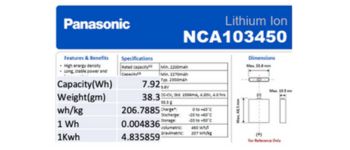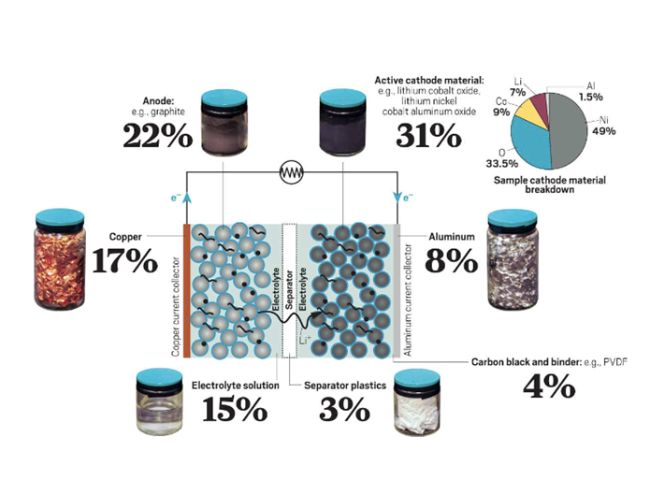Lithium-ion (Li-ion) batteries are the leading technology used in the electric vehicle (EV) industry worldwide. However, there are growing concerns about the availability of lithium deposits. Many worry that the world may not have enough lithium to meet the increasing demand for EVs, potentially putting the future of EV technology at risk.
This article will provide insights into the actual lithium content in Li-ion batteries by explaining the various components and raw materials used in Li-ion battery technology, detailing their respective percentages or weight compositions. Typically, when we think of Li-ion batteries, it’s common to assume that they contain a significant amount of lithium and this article aims to help understand exactly how much lithium is actually used in the production of Li-ion batteries, providing a comprehensive understanding of the material composition of these essential energy storage devices.
For understanding purposes, we consider the most advanced Li-ion battery, the (Nickel Cobalt Aluminum Oxide)NCA 103450. This popular battery, used by Tesla in its EVs, is manufactured by Panasonic.Figure 1 illustrates some basic specifications of the cell’s capacity and weight, showing that 1 kg of this battery can deliver 207 Wh of specific energy. For large-scale calculations, where we are interested in kWh, the required battery weight for 1 kWh is 4.83 kg.
Figure 2 shows the various components and their percentage breakup (in weight/mass) that are used in the battery cell.


From this, we can determine the individual weight (in kg) required for a 1 kWh battery cell. The following table provides the estimates:
| Component | % | Mass (kg) |
| Anode | 22% | 1.0626 |
| Cathode | 31% | 1.4973 |
| Electrolyte | 15% | 0.7245 |
| Separator | 3% | 0.1449 |
| Aluminium | 8% | 0.3864 |
| Copper | 17% | 0.8211 |
| Binder/ Carbon Black | 4% | 0.1932 |
| Total | 100% | 4.83 |
Within the cathode of a Li-ion battery, various elements are essential, including nickel, cobalt, lithium, and others as shown in the pie chart in Figure 2. For the NCA Li-ion battery, it turns out that lithium constitutes only about 7% of the cathode’s composition by weight. This means that for a 1 kWh battery cell, only 0.1 kg of lithium is required, which represents merely about 2% of the total battery weight. Therefore, contrary to common assumptions, the actual lithium content in a Li-ion battery is quite small.
Credits:
Versha et al. https://doi.org/10.1016/j.cej.2023.145822
(The views expressed here are personal and have been consolidated from a variety of sources, including articles, blogs, and other relevant literature.)

